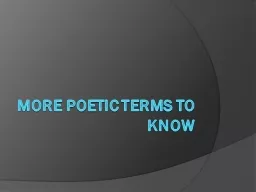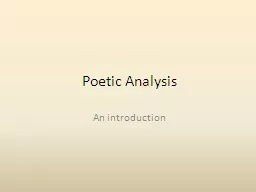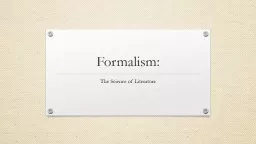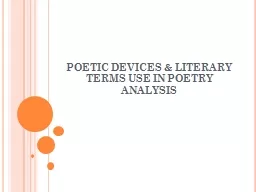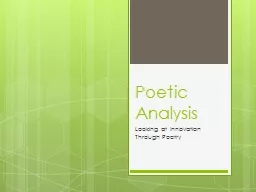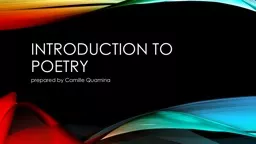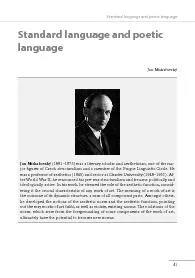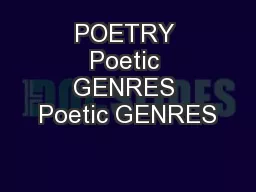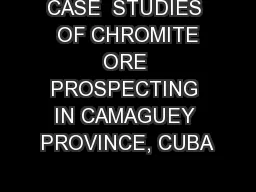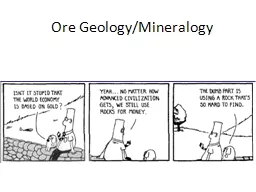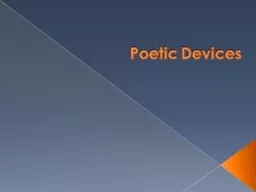PPT-M ore Poetic Terms to Know
Author : tawny-fly | Published Date : 2017-03-29
Stanza A group of lines of verse usually set off from other groups by a space Think of a stanza as a poetry paragraph Poets may start a new stanza to shift the
Presentation Embed Code
Download Presentation
Download Presentation The PPT/PDF document "M ore Poetic Terms to Know" is the property of its rightful owner. Permission is granted to download and print the materials on this website for personal, non-commercial use only, and to display it on your personal computer provided you do not modify the materials and that you retain all copyright notices contained in the materials. By downloading content from our website, you accept the terms of this agreement.
M ore Poetic Terms to Know: Transcript
Download Rules Of Document
"M ore Poetic Terms to Know"The content belongs to its owner. You may download and print it for personal use, without modification, and keep all copyright notices. By downloading, you agree to these terms.
Related Documents

